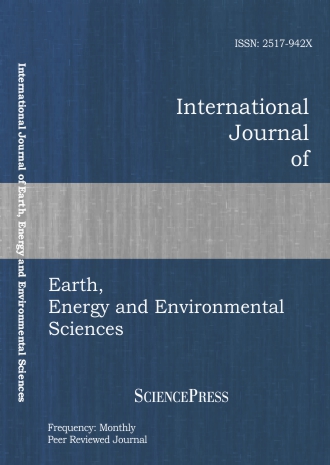
Scholarly
Volume:14, Issue: 3, 2020 Page No: 111 - 115
International Journal of Earth, Energy and Environmental Sciences
ISSN: 2517-942X
Geophysical Investigation of Abnormal Seepages in Goronyo Dam Sokoto, North Western Nigeria Using Self-Potential Method
In this research, Self-Potential (SP) method was employed to locate anomalous electrical conductivity located in Goronyo area and also to determine the condition of the embankment of the dam. SP data were plotted against distance along with the profile and spacing of electrode using surfer software (version 12). High and low zones of SP values were identified along the right and left abutments of the dam reservoir. The regions with high SP values were described to be high tendency of fluid flow associate with wet sandy soil. These zones have the SP values ranging from 200 mV and above. High SP values were due to the high moisture content that may lead to the seepage of water leaking through this zone. The zones with high SP values occupied Profiles S1, S2, S3, S4 and S5 indicating the presence of potential seepage paths within the subsurface of the embankment. These regions of seepage were identified as weak zones and potential pathways through which water could be lost from the dam reservoir. The SP values for the regions range from 250 m to 400 m (S1), 306 m to 400 m (S2), 192 m to 400 m (S3), 48 m to 200 m (S4) and 7 m to 170 m (S5) with their corresponding maximum depths of 30 m, 28 m, 28 m, 30 m and 26 m respectively. However, zones of low SP values in the overburden were observed which shows the presence of intact regions, which may be due to the compactness and dryness around the dam. The weak zones were considered as geological features (such as fractures, joints, and faults) that have undermined the integrity of the dam structure, which has led to the abnormal seepage.